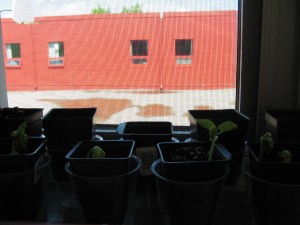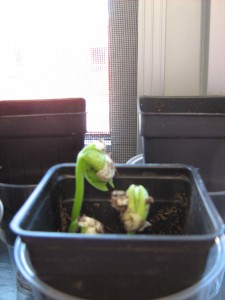Good afternoon!
8 days left! It seems extraordinary that our school year is almost over. Time sure flies when you are having fun!
Students started off this morning by working on some Math. The Gr. 4 students have begun working with division and using remainders. This requires students to attempt one of the following strategies: modelling (eg. chips, counters, etc.), using arrays, or using multiplication facts. Take a look at the example below:
43 / 7 = ___
Modelling/ Arrays
0 0 0 0 0 0 0
0 0 0 0 0 0 0
0 0 0 0 0 0 0
0 0 0 0 0 0 0
0 0 0 0 0 0 0
0 0 0 0 0 0 0
0
Students can see very clearly that 43 / 7 = 6 R 1, as there is one chip left over that cannot be placed into the array.
Multiplication
43 / 7 = ___
Well…
1 x 7 = 7 2 x 7 = 14
3 x 7 = 21 4 x 7 = 28
5 x 7 = 35 6 x 7 = 42
So…
42 / 7 = 6
Since 43 – 42 = 1, then 43 / 7 = 6 R 1
The Gr. 5 students have started to look at Statistics and Probability. Today we discussed the difference between first-hand and second-hand data. We also began looking at the differences and similarities between single bar graphs, and double bar graphs. Tomorrow we will be working on constructing some double bar graphs.
In Science today we continued to look at animal adaptations. We learned that frogs adapt in the following ways: camouflage (brown, yellow, green skin with spots or stripes), and they have thin, moist skin that allows air and water to pass through easily. Ducks also have adaptations that help them to survive in wetlands. They have webbed feet, and oily, waterproof feathers. We created a Venn Diagram comparing these two wetlands animals and their adaptations. Tomorrow we will be comparing two wetlands plants: lilies and cattails!
In Social Studies today we completed our discussion of the Loyalists. Students were then asked to write a journal entry, letter, or a speech pretending to be one of the following characters. Students could be: an Acadian, a British Soldier (during Expulsion of the Acadians, or the American Revolution), a French soldier, a Loyalist, an American soldier/citizen, or a Black Loyalist/Slave. We have grouped these two historical events due to their similarities. Both feature peoples who were forcibly removed from their homes due to their strong loyalties. They also both greatly affected how their regions developed, and led to migration and settlement in early Canada. I’m excited to get to read everyone’s work over the next few days!
Homework: Read 20 minutes
Multiplication Quiz – Friday
Math: Gr. 4 – pgs. 303-304 #1-9
Gr. 5 – pg. 260 #1-5
pg. 263 #1
Social: Loyalist/Acadian responses (tomorrow)
Jump Day – tomorrow!
Yearbook Orders – June 24th ($20)
Permission Forms – ASAP



